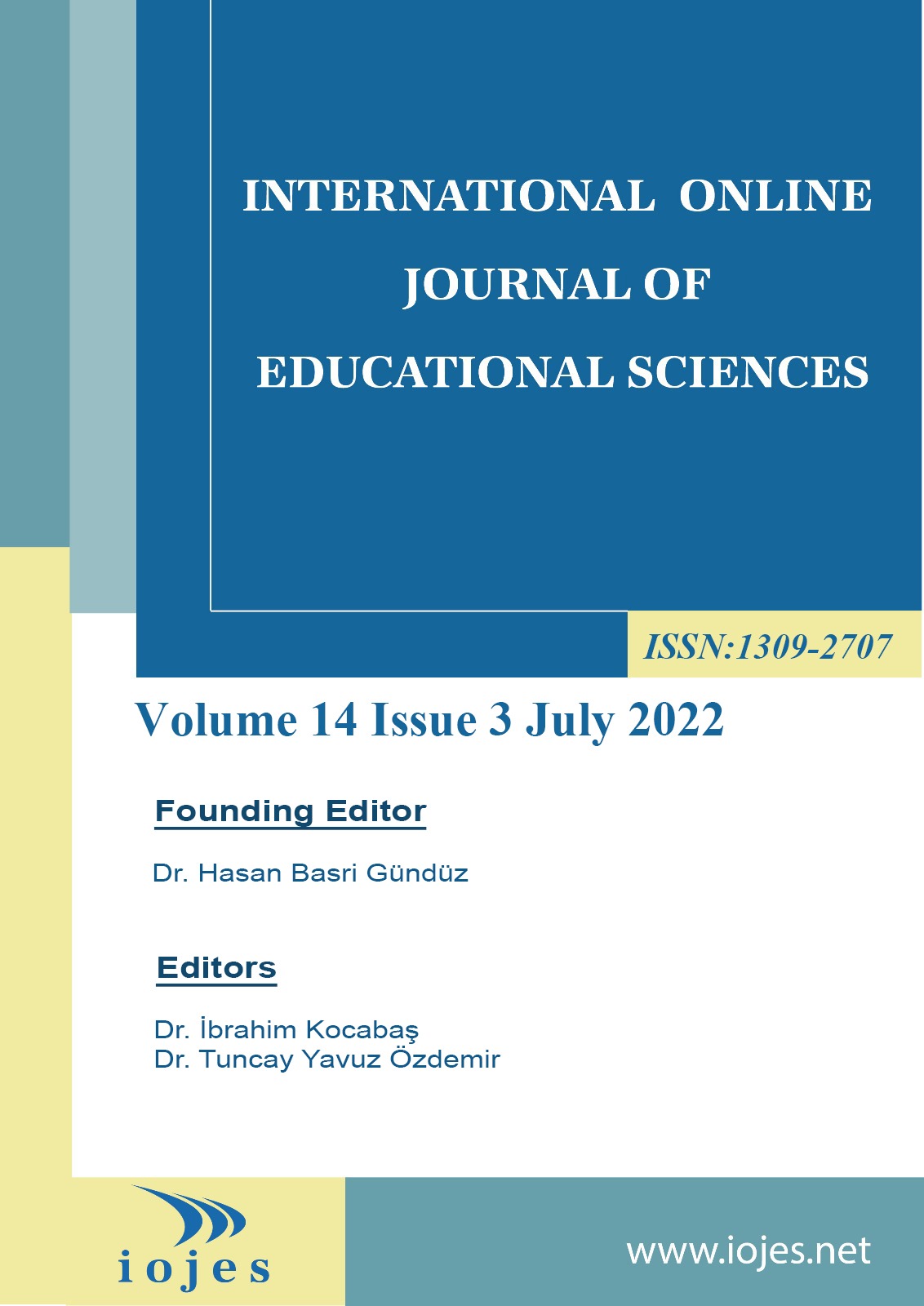Author :
Abstract
Keywords
Abstract
With its design, implementation, and evaluation processes, online and remote teaching is crucial in learning environments, from primary schools to higher education institutions. The current study examines the sports science students' technology acceptance and sense of community levels in remote teaching by various variables. The study group determined by a simple random sampling method comprised 486 students (288 males and 198 females) studying sports sciences. Students' technology acceptance and sense of community levels were measured with the Online Learning Systems Acceptance Scale and the Sense of Community Scale. The study has determined significant differences between the students according to the variables of gender, department, personal computer ownership, internet access, and computer usage time. As a result, there can be said to be a positive relationship between students' technology acceptance and their sense of community in remote teaching.
Keywords
- Akdemir, Ö. (2011). Yükseköğretimimizde uzaktan eğitim. Yükseköğretim ve Bilim Dergisi, (2), 69-71.
- Ally, M. (Ed.) (2009). Mobile learning: Transforming the delivery of education and training. Edmonton, Canada: Athabasca University Press.
- Andoh, R. P. K., Appiah, R., & Agyei, P. M. (2020). Postgraduate distance education in University of Cape Coast, Ghana: Students’ perspectives. International Review of Research in Open and Distributed Learning, 21(2), 118-135.
- Banas, E. J., & Emory, W. F. (1998). History and issues of distance learning. Public Administration Quarterly,2(3), 365-383.
- Bauman, G. L. (2005). Promoting organizational learning inhigher education to achieve equity in educational outcomes. New Directions for Higher Education, 2005(131), 23-35.
- Becker, L. (2004). How to manage your distance and open learning course. New York: Palgrave Macmillan.
- Clarke, A. (2004). E-learning skills. New York: Palgrave Macmillan.
- Cottrell, S. (2015). Skills for success: Personal development and employability. New York: Palgrave Macmillan.
- Davis, F. D. (1989). Perceived usefulness, perceived ease of use, and user acceptance of information technology. MIS Quarterly, 13(3), 318-340.
- Fidan, M. (2016). Uzaktan eğitim öğrencilerinin uzaktan eğitime yönelik tutumları ve epistemolojik inançları. Hacettepe Üniversitesi Eğitim Fakültesi Dergisi, 31(3): 536-550.
- Gonçalves, S. P., Sousa, M. J., & Pereira, F. S. (2020). Distance learning perceptions from higher education students—the case of Portugal. Education Sciences, 10(12), 374.
- Hanson, M. (1997). Educational decentralization: Issues and challenges. Santiago, Chile: Program to Promote Educational Reform.
- Ilgaz, H. (2008). Uzaktan eğitimde teknoloji kabulünün ve topluluk hissinin öğrenen memnuniyetine katkısı. Yüksek Lisans Tezi. Hacettepe Üniversitesi Bilgisayar ve Öğretim Teknolojileri Eğitimi Anabilim Dalı, Ankara.
- James, W. B., & Gardner, D. L. (1995). Learning styles: Implications for distance learning. New directions for adult and continuing education, 1995(67), 19-31.
- Karakuş, N., Ucuzsatar, N., Karacaoğlu, M. Ö., Esendemir, N., & Bayraktar, D. (2020). Türkçe öğretmeni adaylarının uzaktan eğitime yönelik görüşleri. RumeliDE Dil ve Edebiyat Araştırmaları Dergisi, (19), 220-241.
- Kürtüncü, M., & Kurt, A. (2020). COVID-19 pandemisi döneminde hemşirelik öğrencilerinin uzaktan eğitim konusunda yaşadıkları sorunlar. Avrasya Sosyal ve Ekonomi Araştırmaları Dergisi, 7(5), 66-77.
- Naidu, S. (Ed.). (2003). Learning & teaching with technology: Principles and practices. London: Psychology Press.
- Özdoğan, A. Ç., & Berkant, H. G. (2020). Covid-19 pandemi dönemindeki uzaktan eğitime ilişkin paydaş görüşlerinin incelenmesi. Milli Eğitim Dergisi, 49(1), 13-43.
- Rosenberg, M J (2001) E-Learning: Strategies for delivering knowledge in the digital age, McGraw-Hill, New York.
- Rovai, A. P., Wighting, M. J., & Lucking, R. (2004). The classroom and school community inventory: Development, refinement, and validation of a self-report measure for educational research. The Internet and Higher Education, 7(4), 263-280.
- Serçemeli, M., & Kurnaz, E. (2020). Covid-19 pandemi döneminde öğrencilerin uzaktan eğitim ve uzaktan muhasebe eğitimine yönelik bakış açıları üzerine bir araştırma. Uluslararası Sosyal Bilimler Akademik Araştırmalar Dergisi, 4(1), 40-53.
- Steeples, C and Jones, J (2002) Networked Learning: Perspectives and issues, SpringerVerlag, London.
- Van Emden, J., & Becker, L. (2016). Presentation skills for students. Macmillan International Higher Education.
- Vázquez-Cano, E. (2014). Mobile distance learning with smartphones and apps in higher education. Educational Sciences: Theory and Practice, 14(4), 1505-1520.
- Wolf, D. B., & Johnstone, S. M. (1999). Cleaning up the language: Establishing a consistent vocabulary for electronically delivered academic programs. Change: The Magazine of Higher Learning, 31(4), 34-39.
- Yenilmez, K., Turgut, M. ve Balbağ, M. Z. (2017). Öğretmen adaylarının uzaktan eğitime yönelik tutumlarının bazı değişkenler açısından incelenmesi. Erzincan Üniversitesi Eğitim Fakültesi Dergisi, 19(2), 91-107.
- Yılmaz-İnce, E., Kabul, A., & Diler, İ. (2020). Distance education in higher education in the COVID-19 pandemic process: A case of Isparta Applied Sciences University. International Journal of Technology in Education and Science (IJTES), 4(4), 343-351.
- Yiğit, Ş. (2019). Öğrencilerin spora özgü başarı ve motivasyon düzeylerinin incelenmesi. Researcher, 7(1), 249- 258.
